What are the elements of interior design?
I am often asked this question, followed by another — “Is interior design an art, a science, or is it a formula?”
The answer is: There is some art, there is some science, but there’s no formula. If there were, there would be no place for self-expression, personal taste, or that special feeling when a space perfectly suits the needs of the people living in it.
This doesn’t mean there are no general rules or guidelines; there are — and they’re known as the seven elements of interior design. How these seven elements combine to create the ideal mix is the art of getting it right!
ELEMENT 1 — SPACE
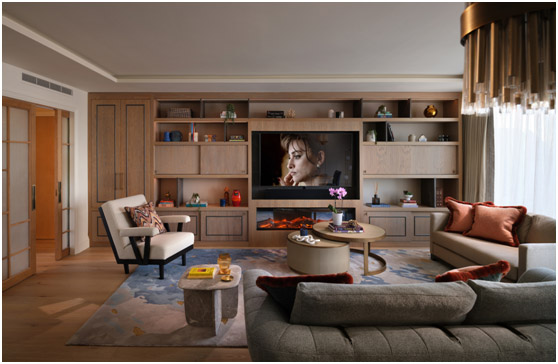
The first and most important element for designers to consider is space planning, which is the process of analysing the actual size and shape of the physical space available and maximising its potential. The balance between positive space (where the room’s furnishings are placed) and negative space (the empty spaces in between) is what makes a room feel comfortable and inviting. Too much positive space can make a room feel cluttered and crowded, while too much negative space can feel cold and impersonal.
ELEMENT 2 — LINE
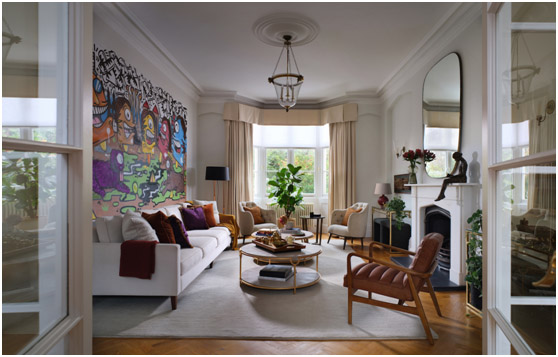
Both the structural features of the room itself, as well as the furnishings within it, can create lines that influence how it feels to be in that space. There are three types of lines: horizontal, vertical and dynamic.
Horizontal lines are found in tables, chairs and similar furnishings and can make a room feel wider and more spacious. Vertical lines, such as those from doors, windows, or tall furniture, give an increased sense of height. Horizontal and vertical lines have to be in balance, and it is in this aspect of design that a creative vision, rather than strict rules, plays a part in bringing it all together. Dynamic lines are those that give a sense of movement and energy, and they come from architectural features such as staircases, curves or even tiling laid diagonally. Working together, the three types of line create a sense of harmony and unity.
ELEMENT 3 — FORM

Form refers to shapes of the room in general, including the furnishings and other decorative accessories, such as art works and light fittings.
Form can be geometric or natural. Geometric forms are those with straight lines and angles – usually man-made; natural forms include not only the irregular shapes of nature but also curvaceous man-made pieces, such as furniture. Square shapes lend the impression of stability and strength while curves and rounded shapes bring softness.
ELEMENT 4 — LIGHT
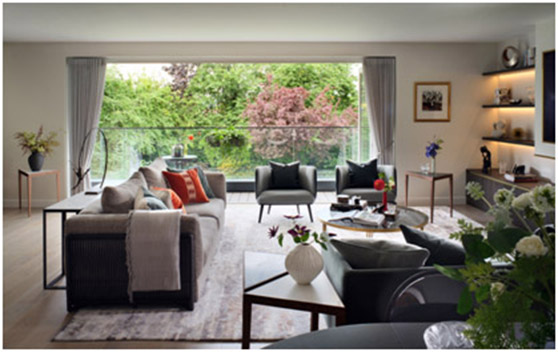
Both natural daylight and artificial illumination will be a feature of almost any living space. Light sets the mood — and a good balance ensures the room is always at its best. Brighter lighting is often used in living rooms, dining rooms and kitchens, where natural light can be boosted by adding windows and skylights. At night, accent lighting can be used to create a different atmosphere. The type and amount of light in a room at a given time can also affect how warm or cold it appears to be. In all cases, the choice of lighting also influences the best colour choices for the room, as colours react differently to different types and intensity of light.
ELEMENT 5 — COLOUR
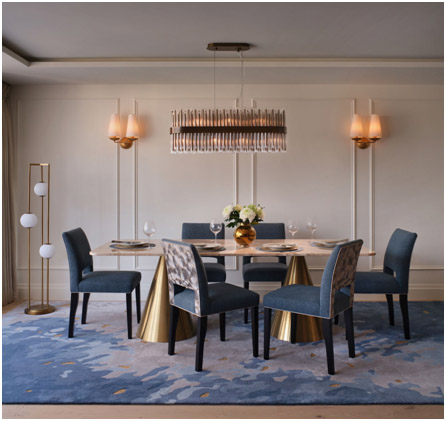
The importance of colour is not only in that it creates a specific mood but also because colour can make a room feel larger, lighter, or calmer. Different colours tend to have different effects on the human psyche, and colours should therefore be chosen to complement the room’s use and function. For example, in living areas one would use hues and shades colours that are more vibrant while in bedrooms a more restful colour palette would be appropriate.
Because of the interplay between light and colour, the time of day will dictate whether the space is seen in natural or artificial light and this will in turn affect a colour’s properties. For this reason, the success of a colour choice depends upon considering ambient lighting conditions over the 24-hour cycle.
ELEMENT 6 — TEXTURE
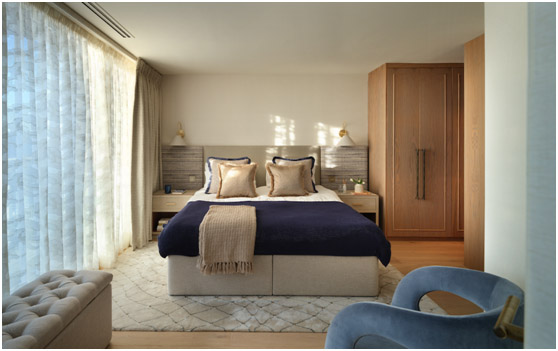
Texture adds more than a visual dimension to the look and feel of a space — the clue is in the word “feel”. Different textures contribute tactile sensations, depth, and character to a space. There are many types of texture: smooth, rough, plush, coarse, slick, and so on. Adding different textures is a simple yet effective way of adding interest and subtle variations to a space — or a specific area within a space.
ELEMENT 7 — PATTERN
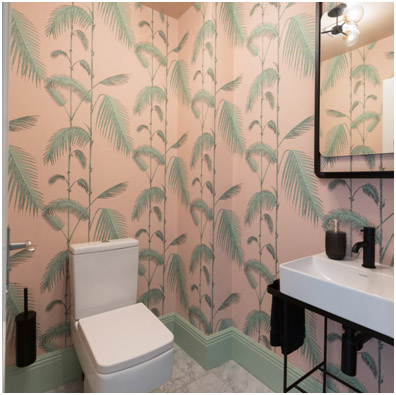
Patterns bring life, energy and a sense of movement, to a room. As with texture, these effects are relatively easy to add by way of carpets, area rugs, curtains and even certain artworks. Examples of patterns include geometric shapes, stripes, floral designs, animal prints, abstract and stylised motifs (for example faces, leaves, waves, and so on).
Thank you for reading this month’s blog. Do let us know if you have any questions about the elements of interior design. We have years of experience working combining these fundamentals and also leaving space for self-expression so why not hire us for your home renovation and let us show you exactly what we mean?
Thanks for reading and tune in for next month’s blog.








